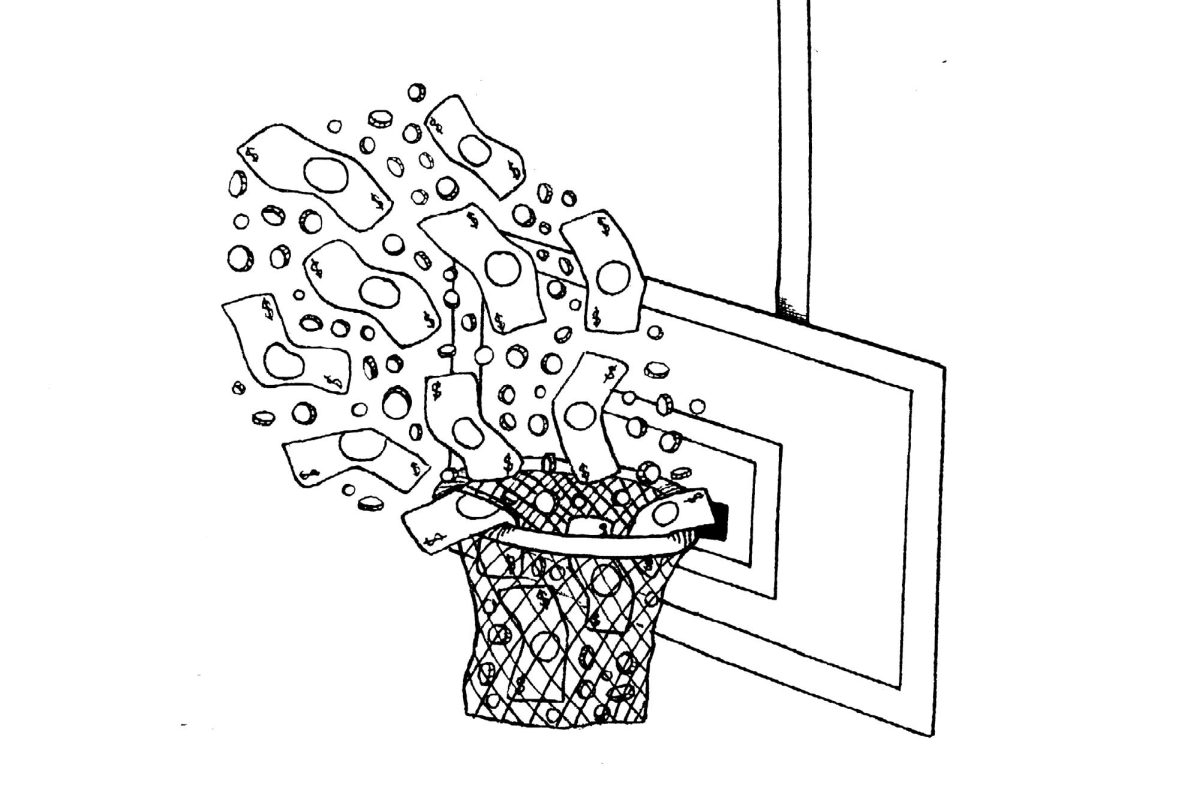What’s for breakfast? How about lunch or dinner — or just a snack? GW’s dining options in District House, Shenkman and Thurston halls have made it easier for students to answer these questions, but they haven’t completely sated their appetite for diverse, high-quality dining options on campus.
Make no mistake — these dining halls have shaken up the culinary scene at GW. The new all-you-can-eat and swipe-based venues in Shenkman and Thurston halls plus the counter service options in District House have relieved some of the burden students face when they’re looking for something to eat, especially on a campus that’s long been dogged with concerns over food security.
But having a reliable and accessible source of food on campus only meets the bar. Simple measures like labeling the dishes the dining halls are serving and communicating dining options will elevate students’ experience — and help them meet their nutritional needs — as the University fully transitions to its new dining plan in the fall.
Students searched for GWorld vendors on and off campus until the dining areas in District House and Thurston and Shenkman halls opened in August, October and January, respectively. And while it gave students a degree of financial and adult-like independence to pick and choose from dozens of GWorld vendors across D.C., this model didn’t work for everyone — just ask the friend on the legacy dining plan who ran out of dining dollars last month.
Ultimately, GW’s unorthodox and open approach to dining hasn’t ensured students can always eat what they want when they want it, with the cost of food leading them to skip meals, lose weight and struggle with food insecurity. Rising prices have made it more difficult to find affordable dining options on or near campus in recent years, especially with Whole Foods exiting the GWorld program next month.
Under the new meal plans, students can still use their dining dollars over the course of the semester at campus favorites like GW Deli and swipe in at Thurston or Shenkman halls or Pelham Commons on the Mount Vernon Campus. Students who aren’t on the unlimited plans can still run out of meal swipes or exhaust their Dining Dollars early in the semester, but GW’s dining halls are like a safety net — they’ll always be there even if they don’t always serve something that strikes you as appetizing.
To be truly successful, the dining halls need to offer food items that students want to — and can — eat. Diners with dietary needs arising from personal preferences, allergies or religious beliefs can often find few or repetitive options that comply with their restrictions. And for vegetarian, vegan, gluten free and other students with dietary restrictions, a lack of labels can make it difficult if not impossible to know the ingredients in what they’re eating.
“Mystery meat” is one thing, but no student should have to guess what they’re consuming and risk having an allergic reaction. Fortunately, this is an easy problem to solve — work more diverse options into the menu, communicate what’s on offer and clearly label what’s at each of the stations in GW’s dining halls, especially as options run out or staff replace certain dishes.
Though foot traffic may have fallen off as this semester comes to a close, it’s clear that the dining halls aren’t just a place to eat — they’re community spaces. Officials have laid the groundwork to make students’ dining experience a distinct part of their time at the University. Dining halls are a decidedly orthodox move for an institution keen on marketing its one-of-a-kind nature, but they’ve given students places to gather, relax and eat — and where else can you get a waffle emblazoned with “GW”?
Granted, these dining halls are brand new and there are bound to be some issues that arise along the way. But because the primary purpose of these venues is to serve students food, it’s hard to give officials too much credit on that front when there’s a lack of options and limited labeling. There’s work remaining to improve students’ experience, even if it’s fairly simple — students must be able to trust they can rely on the University’s dining halls when GW fully transitions to its swipe-based meal plans this fall.
For now, Shenkman and Thurston halls have transformed students’ on-campus dining options, but there’s a long way to go before they can serve every student’s needs. We raise high at GW, and our new dining halls still need a boost to meet our expectations.
The editorial board consists of Hatchet staff members and operates separately from the newsroom. This week’s staff editorial was written by Opinions Editor Ethan Benn based on discussions with Contributing Culture Editor Jenna Baer, Contributing Social Media Director Anaya Bhatt, Basketball Editor Sunit Chakraborty and Social Media Director Ethan Valliath.


